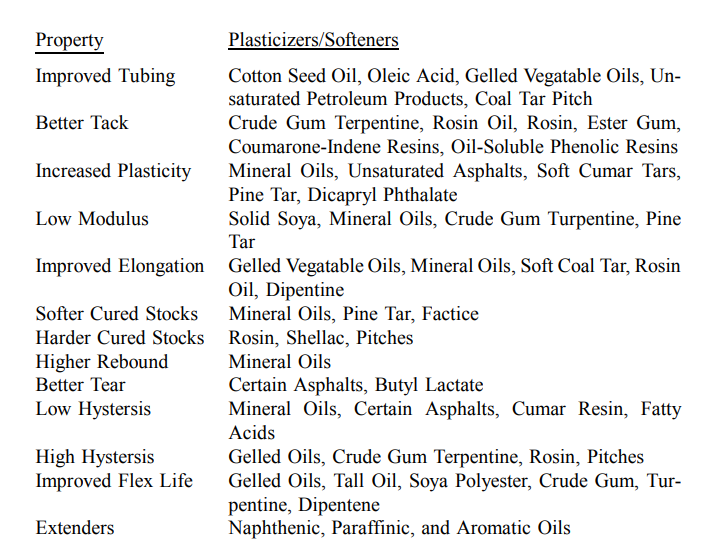Plasticizers are a type of additive used in rubber compounds to improve their flexibility, durability, and other physical properties. They are often added to rubber formulations to make the material softer and more pliable, while also improving its resistance to cracking, abrasion, and other forms of wear and tear.
There are many different types of plasticizers that can be used in rubber compounds, depending on the specific properties required for the application. Some common examples of plasticizers include phthalates, adipates, citrates, and phosphates.
Phthalates are one of the most commonly used plasticizers in rubber compounds. They are highly effective at improving flexibility and durability, and are often used in applications such as automotive hoses, seals, and gaskets. However, there are concerns about the potential health effects of certain phthalates, such as di(2-ethylhexyl) phthalate (DEHP), which has been linked to developmental and reproductive issues.
Adipates, citrates, and phosphates are alternative plasticizers that are often used as substitutes for phthalates in rubber compounds. These plasticizers are generally considered to be safer and more environmentally friendly than phthalates, and are becoming increasingly popular as awareness of the potential health risks associated with phthalates grows.
Overall, plasticizers are a critical component of many rubber formulations, and their selection and use can have a significant impact on the properties and performance of the final product. Careful consideration of the specific application and required properties is important when selecting a plasticizer for use in a rubber compound.
 (909) 987-1774
(909) 987-1774 Email Us
Email Us








